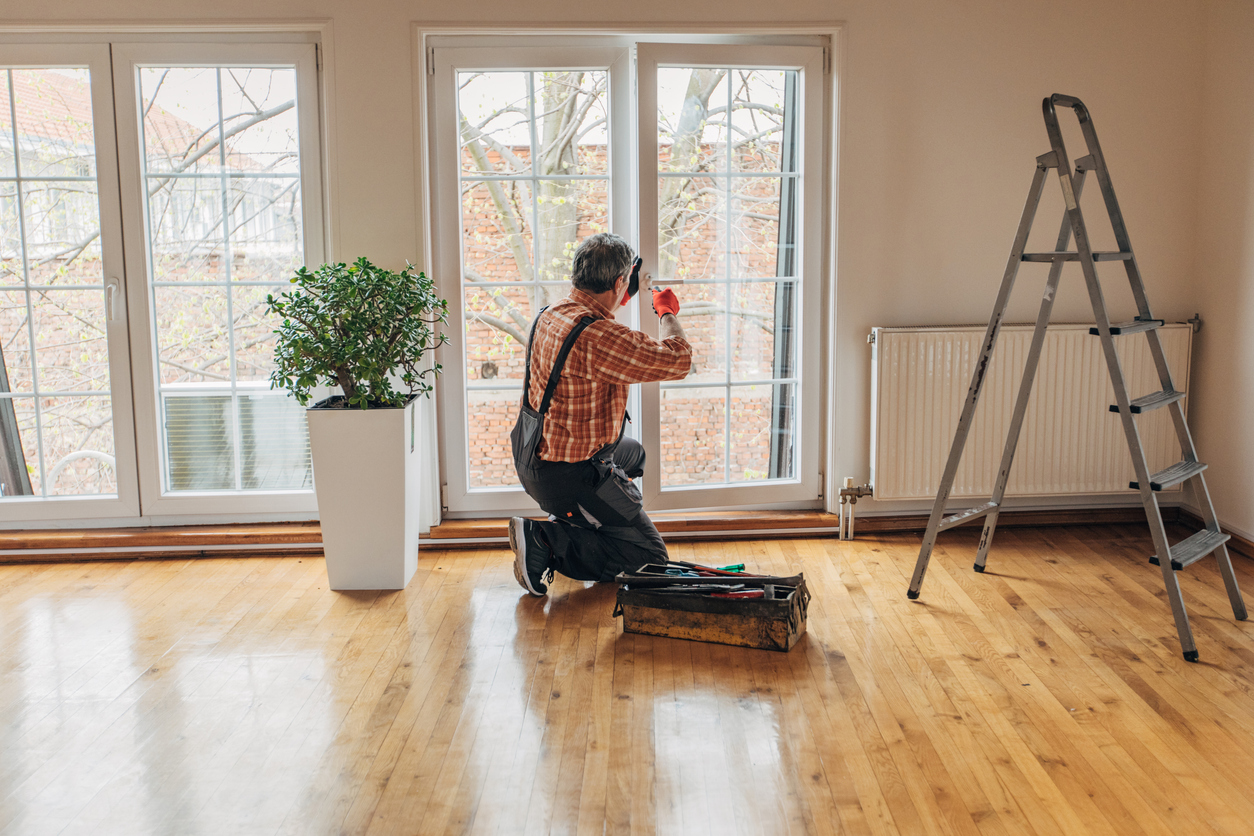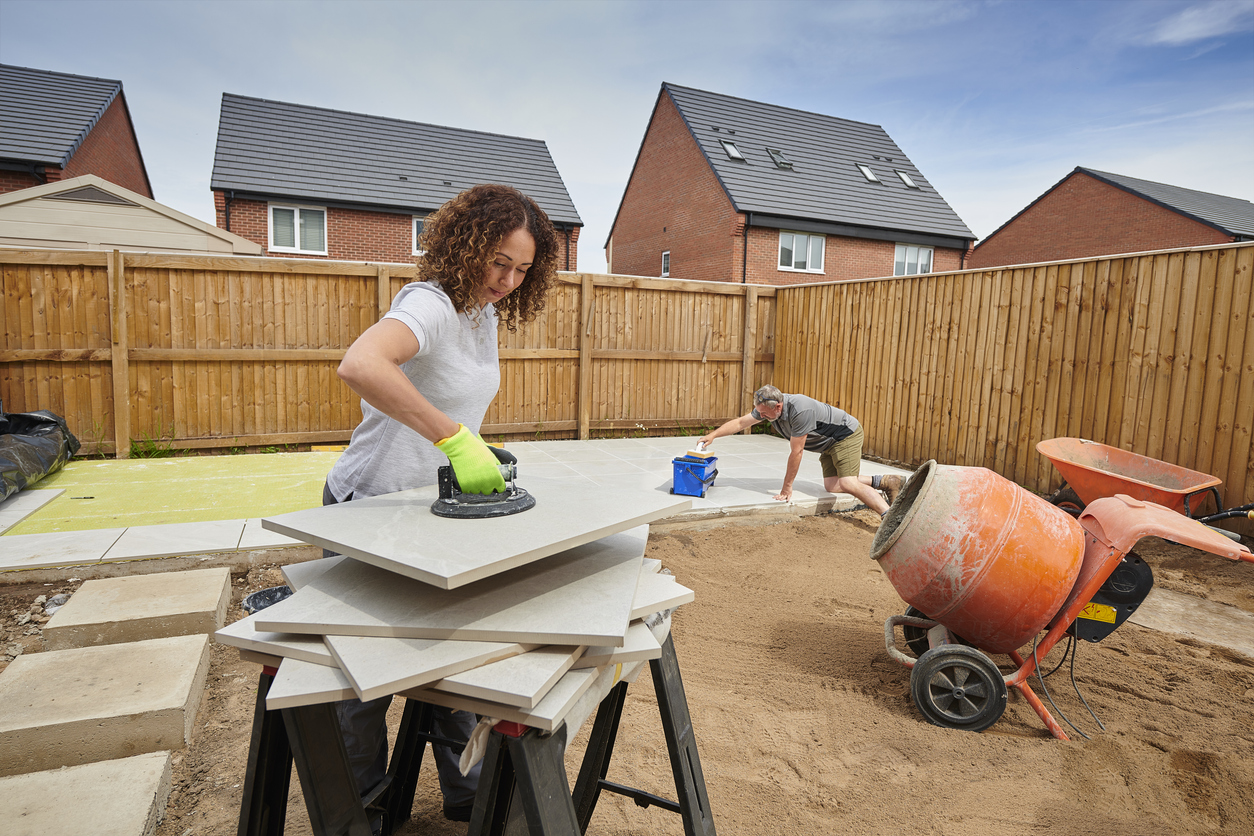
Key takeaways:
- Home office improvements and medically necessary improvements are eligible for tax deductions but have specific criteria.
- Energy-efficiency home improvements may qualify for tax credits.
- Capital improvements to your home may not be eligible for tax deductions but can benefit your tax situation down the road.
If you’re planning home improvements, it might be worthwhile to research whether the upgrades you’re considering qualify for a tax deduction. While home renovations typically don’t qualify for tax deductions, there are certain categories of improvements that may be tax-deductible. Here, we’ll review four key areas in which improvements may qualify for a tax deduction or tax credit.
Keep the differences between tax deductions and tax credits in mind. A tax deduction is a reduction in the amount of your income before calculating how much you owe in federal taxes. In contrast, a tax credit decreases the actual amount of tax you owe.
Capital improvements
If your improvement meets Internal Revenue Service (IRS) criteria for a “capital improvement,” you cannot deduct the cost. But that doesn’t mean it is without tax benefits. If you keep detailed records of your expenses, that may help reduce the amount of tax you pay when you sell your home.
Capital improvements are permanent upgrades, adaptations or enhancements that improve your home and increase the home’s value. To qualify as a capital improvement, the project must meet one of the following criteria:
- “Substantially adds” value to your home
- Prolongs the useful life of the home
- Adapts the home to new uses
An example might be the installation of a central air conditioning system or replacement of a roof. You can add the costs of these capital improvements to the cost basis of your home. When it comes time to sell, you can subtract them from the sales price to obtain the amount of your profit. That may reduce your taxes due in the year you sell your home.
Home office improvements
Improvements you make to your home office are tax-deductible in the year you make them. And while home repairs are generally not tax-deductible, repairs made specifically to a home office are. If you make a repair that benefits your entire home (maybe repairing a leaky roof), you must allocate the cost for the portion of your home you use as an office. So, if that roof repair cost $1,000, and your home office takes up 10% of the square footage of your home, you could deduct 10% of the cost, or $100.
Aging-in-place improvements
More than 75% of adults aged 50 and up want to age in place, meaning they want to stay in their current homes. But many will need to make aging-in-place improvements to achieve that goal.
The IRS does allow tax deductions for improvements deemed “medically necessary.” If your dated pink bathroom is making you feel sick, that won’t qualify. But if you have documentation of a need from a healthcare provider, an improvement may be tax-deductible. Common examples of medically necessary home improvements might include installing support bars in bathrooms, widening doorways, lowering counters or adding ramps.
Of note, these expenses – claimed as an IRS “medical expense deduction” – are only available to taxpayers who itemize on federal income taxes and who have medical expenses that exceed 7.5% of adjusted gross income. Also, the amount of the deduction will depend on how the improvement impacts your home’s value. If the improvement increases the value of your home, the expense is considered as the cost of the improvement minus the increase in home value. If the improvement does not increase the value of the home, the full cost can be considered (subject to the 7.5% criteria).
Energy-efficiency home improvement credits
If you make qualified energy-efficient improvements to your existing primary residence, you may be eligible for a tax credit of up to $3,200 per year. Each item of qualifying property must be produced by a qualified manufacturer.
The credit would be 30% of qualified expenses, including:
- Energy-efficiency improvements installed during the taxable year
- Residential energy property
- Home energy audits
The $3,200 can include up to $1,200 for energy-efficient home improvements, with specific dollar limits on exterior doors and windows, skylights and home energy audits, and up to $2,000 per year for qualified heat pumps, water heaters, biomass stoves or biomass boilers.
To qualify, home improvements must meet energy efficiency standards, and must be new systems and materials, not used ones. Some improvements – such as for exterior doors, windows and skylights, and insulation and air-sealing materials and systems – have specific credit limits. Home energy audits, which may qualify for a tax credit of up to $150, have several qualification criteria. Check the IRS website for details on all requirements.
In addition, new residential energy products that meet or exceed the Consortium for Energy Efficiency highest-efficiency tier, can qualify for a credit up to $600 per item (including labor for installation). These items can include:
- Central air conditioners
- Natural gas, propane or oil water heaters
- Natural gas, propane or oil furnaces, and hot-water boilers
Oil furnaces or hot-water boilers can also qualify through different efficiency criteria, and costs of electrical components needed to support residential energy property can qualify if they meet specified criteria.
An important point to keep in mind when calculating energy-efficiency tax credits is that you may need to subtract subsidies, rebates or other financial incentives from the expense.
A note for landlords
The information listed above applies to homeowners living in their homes as primary residences. If, however, you are a rental property owner and making improvements to increase or maintain the rentability of your space, you can deduct expenses for repairs and maintenance of property and equipment. This applies even to repairs you make to a room or portion of your home you rent out full-time. Repairs could include anything from fixing a broken window or leaky faucet to remodeling an apartment unit.
Planning for your tax-deductible home improvements
How and when you can take tax deductions or credits is a complex subject. Be prepared to keep good records of all expenses. And before you launch into any improvements, be sure to review IRS guidelines carefully and consult with a tax professional. That way, you will understand the best action to take for your particular situation.
When planning for your home improvements, it’s also important to consider how you’ll pay for them. A home equity agreement (HEA) can be a good option for homeowners who’ve built up substantial equity in their homes – but don’t want to take out a loan. With Unlock’s HEA, there are no income requirements, and credit scores as low as 500 may qualify.
The blog articles published by Unlock Technologies are available for general informational purposes only. They are not legal or financial advice, and should not be used as a substitute for legal or financial advice from a licensed attorney, tax, or financial professional. Unlock does not endorse and is not responsible for any content, links, privacy policy, or security policy of any linked third-party websites.”


